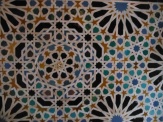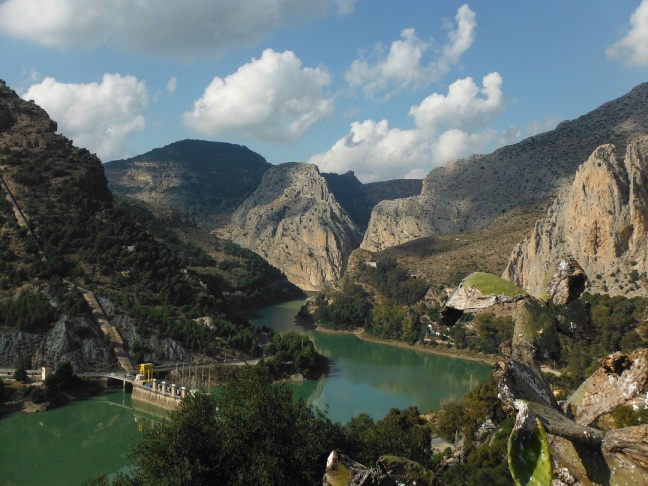Six days in a flat in Lagos doing very little except sleeping, wandering around and eating pastel de natas allowed us to recharge the batteries, knowing that once we left the south west corner of Portugal we would be riding north towards home for the first time since leaving over four months ago. We met up with our English friend Bob (who we met before the ferry to Barcelona, he made us a cup of tea…) one day for his birthday lunch; watched Leicester City beat both Liverpool and Manchester City and turn into real Premier League title contenders; and after spotting an ocean rowing boat with a GB flag dwarfed by the yachts in the harbour, discovered that a bunch of strapping Englishmen were leaving Lagos the same day as us but heading across the Atlantic to Venezuela, hoping to beat the world record for that crossing. (They did). We also ate many pastel de natas. What we didn’t use our time to do was catch up on the blog, plan our route ahead, etc etc.

Before pointing our wheels North towards home we rode out to the most South-Westerly point on the European mainland, Cape St Vincent. The ride there was memorable as being the first time a motorhome with GB plates had tooted and waved at us as we passed – we had made a habit of waving madly whenever we saw one but usually this was ignored. The cape itself had a touristy lighthouse and a busy car park but plenty of quiet spots to sit on the rocks and watch the waves crash against the cliffs. We had saved a can of Sagres (one of the two Portuguese beers that you find everywhere) for a celebratory lunch before riding north up the west coast for a few hours to find somewhere to camp. This stretch of coastline was probably our favourite of the whole trip – rugged cliffs, huge waves, small coves, tiny towns with little more than motorhome car parks and miles of empty beaches. Pretty much the opposite of the Algarve coastline. The road is inland but there are plenty of opportunities to turn off down to the sea – these are generally unappealing on a bike as they involve out-and-back detours often down a huge hill but when the coast is this nice… One day we even stopped at 3pm, unheard of for us who normally ride until it’s too dark to see, to walk a bit of the coastal path, take in cliff-top views and watch the sun set over the Atlantic ocean.


The closer we got to Lisbon, the worse the weather got, and after a day of solid rain we arrived at our hosts in the Portuguese capital dripping wet and took two days for everything to dry out. Lisbon is surrounded by upmarket holiday resorts and the one place everyone had told us to visit if we were in the area – Sintra. Perched high up in the hills about 30km from Lisbon, Sintra has palaces, an old ruined castle and gardens to visit, and if you google it (other search engines available) you will see why it attracts the crowds. However the weather was even worse, and after riding uphill to get there, including a really steep cobbled road (aka death trap in the wet) could see nothing but cloud.



The weather improved a bit (it didn’t rain all the time) as we rode up the coast to Aria Branca youth hostel to have a day by the sea. It is right on the beach and very cheap, but being winter was almost empty. One night there was only us and a middle-aged Swedish guy, on a bike, who was staying there for 4 months and doing what looked like very little. Bit weird. The sun was out but in place of the driving rain was now gale force winds, and it was difficult to stay upright walking. The day we packed up to leave we got 5 miles down the road, realised we could hardly keep the bikes upright never mind ride, and so turned round and went back to the hostel. The receptionist was not surprised to see us return.

On the recommendation of local cyclists we then left the coast headed inland towards Serra de Estrela, Portugal’s highest mountain range. On the way we stayed with a couch surfing host who was doing a volunteer exchange, and had a fun evening with her and the other young volunteers in the town. They had taken to wine tasting (wine is so cheap, what else would you spend your spare time doing) and we were up until 1am helping taste wine and feeling old. It took us about a week to recover. The small road in the foothills of the mountains that we followed went through small pretty villages but unsurprisingly took us up and down some seriously steep hills. One night we stayed at a campground (we were as usual the only tent) and gained attention from all directions – an English couple invited us into their camper to drink wine and eat cheese and biscuits (yes please), the Dutch owner gave us blankets to keep warm (definitely yes please) and the resident cats swarmed around our pitch and climbed all over our stuff as we tried to pack away (less helpful).


Our final night in Portugal was spent in a small town high up on the edge of the mountains in a small hotel that hadn’t been redecorated since the 1950s but we didn’t care because they let us keep the bikes in the dining room (shh health and safety), had a restaurant next door where we ate a 3 course meal with wine for €7 each, served a massive buffet breakfast and filled our flasks with tea. But all of this didn’t quite compensate for the terrible, impatient driving that had started to knock the pleasure out of cycling in Portugal and so we sped (actually, rode very slowly as it was mostly uphill) towards the Spanish border and didn’t look back. Portugal, until your drivers learn a bit of patience you will stay fairly low down the list of recommended European cycling destinations. But you were pretty to look at, had some great coastline and of course our favourite bakery treat…

Thanks to Jim and Tricia (again, you made it onto two posts!), Jose for the tips, João and family, Miguel, Daniel at The Bike Shop (Terrugem), Henrique and Paula, Muge and the other international volunteers, and Rich and Angie.































